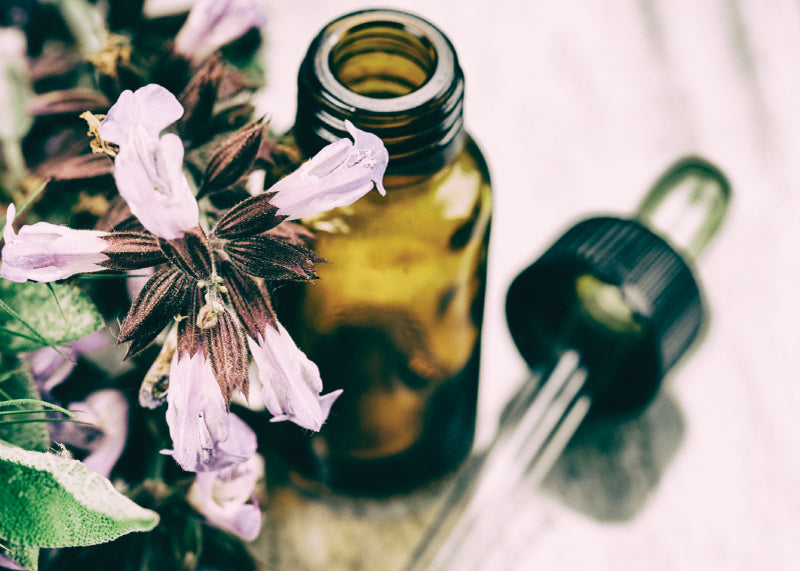Herb Article
Angelica
By Kate Briggs, Certified Herbalist
 Herb
Herb
Angelica
Latin Name
Angelica archangelica
Parts used
The root of Angelica is most commonly found in herbal commerce but the leaves, seeds, and shoots are also viable for medicinal purposes. The plant's sturdy hollow stalks are still used as a vegetable in Greenland and the Faeroe islands and are commonly candied for confectionary purposes across Europe.
Medicinal Properties
Angelica archangelica is native to North - particularly Northeast - Europe, including Russia, Iceland, Greenland, and the Himalayas. Today, it is widely naturalized in northern temperate regions such as England. It is possible to find naturalized Angelica archangelica in the United States, but there are also dozens of native varieties in the Pacific Northwest down to northern California and the East Coast which share very similar medicinal properties.
Herbalists of ancient European tradition praised Angelica archangelica as a panacea with special curative properties against contagious diseases. Legend has it that Angelica was revealed to a Benedictine monk by an angel to cure the plague. Modern clinical studies have shown that Angelica possesses constituents with antimicrobial and antiseptic properties. In The Complete Herbal, the legendary English physician and herbalist Nicholas Culpeper described Angelica's 'angelical virtues' as the plant's ability to 'resist poison by defending and comforting the heart, blood, and spirits.' Love of Angelica during this time earned it the name 'root of the holy ghost.'
Angelica stands out as a unique remedy with its pungent, warming, oily, and diffusive energetic qualities. These qualities coupled with its sweet and bitter taste have allowed it to shine over the centuries as a digestive stimulant and warming carminative for helping to improve digestion, stomach pains, and colic. Angelica's diffusive nature brings blood to the surface and has traditionally been used to improve circulation to the extremities, lungs, and uterus. The plant has historically been used as a gentle diaphoretic during the first stages of the flu to help raise the body's internal heat for fighting off infection. Also a mild, warming expectorant, herbalists have used Angelica to relieve deep lung infections and asthmatic symptoms. As a reproductive and birth tonic, Angelica has customarily been used to relieve congestion of the uterus and is noted to be helpful in easing painful and cramping menstruation.
Energetic Properties
Angelica archangelica opens the circulation to the periphery and brings blood to the surface. For this reason, it is traditionally used for bringing people into dreamtime and is used in ceremonial sweat lodges to open the imagination and the mind. It works with the other largely anti-inflammatory, relaxing, and pain-relieving herbs to limit headaches, relax the body, and prepare for a more lucid state. Angelica is also attributed to St. Michael, the archangel, providing protection to ward off evil spirits, spells, and enchantments
Preparations & Applications
Angelica is easily decocted, infused, or made into a tincture. Different preparations of the plant highlight different medicinal actions. In general, decoctions of the root produce a viable aromatic bitter perfect for stimulating digestion. Infusions of the root tend to quiet Angelica's bitter flavor and act as a tonifying astringent to the stomach mucosa. Tinctures emphasize the plant's anti-spasmodic properties and can be used as an acute medicine during asthmatic flare-ups and intestinal griping.
Recipes
Parts are by weight
Carminative Tea
1 part catnip
1 part angelica root
1 part peppermint
Mindfulness Tea
1 part angelica root
1 part skullcap
1 part spearmint
1/2 part lavender
1 part gotu kola
1 part chamomile
Sources
The Earthwise Herbal by Matthew Wood
Herbal Healing for Women by Rosemary Gladstar
The Encyclopedia of Herbal Medicine by Andrew Chevallier
Medicinal Plants of the Pacific West by Michael Moore
Culpeper's Complete Herbal by Nicholas Culpeper
A Modern Herbal by Maude Grieve
 Herb
HerbAngelica
Latin Name
Angelica archangelica
Parts used
The root of Angelica is most commonly found in herbal commerce but the leaves, seeds, and shoots are also viable for medicinal purposes. The plant's sturdy hollow stalks are still used as a vegetable in Greenland and the Faeroe islands and are commonly candied for confectionary purposes across Europe.
Medicinal Properties
Angelica archangelica is native to North - particularly Northeast - Europe, including Russia, Iceland, Greenland, and the Himalayas. Today, it is widely naturalized in northern temperate regions such as England. It is possible to find naturalized Angelica archangelica in the United States, but there are also dozens of native varieties in the Pacific Northwest down to northern California and the East Coast which share very similar medicinal properties.
Herbalists of ancient European tradition praised Angelica archangelica as a panacea with special curative properties against contagious diseases. Legend has it that Angelica was revealed to a Benedictine monk by an angel to cure the plague. Modern clinical studies have shown that Angelica possesses constituents with antimicrobial and antiseptic properties. In The Complete Herbal, the legendary English physician and herbalist Nicholas Culpeper described Angelica's 'angelical virtues' as the plant's ability to 'resist poison by defending and comforting the heart, blood, and spirits.' Love of Angelica during this time earned it the name 'root of the holy ghost.'
Angelica stands out as a unique remedy with its pungent, warming, oily, and diffusive energetic qualities. These qualities coupled with its sweet and bitter taste have allowed it to shine over the centuries as a digestive stimulant and warming carminative for helping to improve digestion, stomach pains, and colic. Angelica's diffusive nature brings blood to the surface and has traditionally been used to improve circulation to the extremities, lungs, and uterus. The plant has historically been used as a gentle diaphoretic during the first stages of the flu to help raise the body's internal heat for fighting off infection. Also a mild, warming expectorant, herbalists have used Angelica to relieve deep lung infections and asthmatic symptoms. As a reproductive and birth tonic, Angelica has customarily been used to relieve congestion of the uterus and is noted to be helpful in easing painful and cramping menstruation.
Energetic Properties
Angelica archangelica opens the circulation to the periphery and brings blood to the surface. For this reason, it is traditionally used for bringing people into dreamtime and is used in ceremonial sweat lodges to open the imagination and the mind. It works with the other largely anti-inflammatory, relaxing, and pain-relieving herbs to limit headaches, relax the body, and prepare for a more lucid state. Angelica is also attributed to St. Michael, the archangel, providing protection to ward off evil spirits, spells, and enchantments
Preparations & Applications
Angelica is easily decocted, infused, or made into a tincture. Different preparations of the plant highlight different medicinal actions. In general, decoctions of the root produce a viable aromatic bitter perfect for stimulating digestion. Infusions of the root tend to quiet Angelica's bitter flavor and act as a tonifying astringent to the stomach mucosa. Tinctures emphasize the plant's anti-spasmodic properties and can be used as an acute medicine during asthmatic flare-ups and intestinal griping.
Recipes
Parts are by weight
Carminative Tea
1 part catnip
1 part angelica root
1 part peppermint
Mindfulness Tea
1 part angelica root
1 part skullcap
1 part spearmint
1/2 part lavender
1 part gotu kola
1 part chamomile
Sources
The Earthwise Herbal by Matthew Wood
Herbal Healing for Women by Rosemary Gladstar
The Encyclopedia of Herbal Medicine by Andrew Chevallier
Medicinal Plants of the Pacific West by Michael Moore
Culpeper's Complete Herbal by Nicholas Culpeper
A Modern Herbal by Maude Grieve




